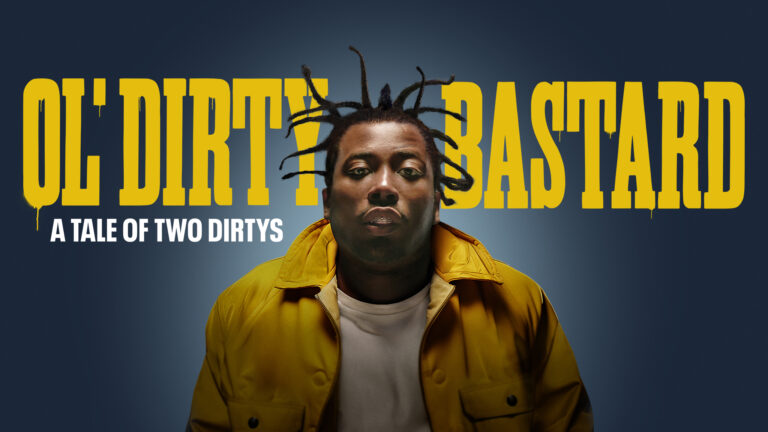The life, career and death of Wu Tang Clan member Ol’ Dirty Bastard was chronicled for the first time ever in a new documentary on A&E. Ol’Dirty Bastard: A Tale of Two Dirtys examines the late rapper’s life as he juggled between down-to-earth family man Russell Jones/Ason Unique and enigmatic rap star, Ol’ Dirty Bastard. Known as the most unconventional in a crew full of colorful MC’s, his eccentric public persona, off-the cuff rhymes and unwillingness to conform to industry norms made him a fan-favorite (marked by the fact that he was the first member of the Wu to release a solo album with 1995’s Return to the 36 Chambers: The Dirty Version).
Embed from Getty ImagesRecap
All in all, ODB was very cognizant of what, and who he represented amidst hip hop’s “shiny suit” era. Often making conscious lifestyle choices in order to keep his image as raw and gutter as possible. This includes the famous limo ride to get food stamps during an MTV biography piece, his foods stamp ID card on his debut album cover, as well as his unconventional delivery. In essence, ODB sought to juxtapose the glamors of the entertainment industry with the realities of inner-city life. As a result, he spent much of his career playing the role of agent provocateur.
Yet his constant his need to live up to the expectations of the Ol’ Dirty Bastard persona led to his untimely demise. Marked by first hand recountings from Wu Tang members Ghostface Killah, Raekwon, GZA, as well as ODB’s widow and her children with ODB, A Tale of Two Dirtys captures the essence of a one-in-a-lifetime personality, devoted father and troubled psyche. After watching, here’s what we learned about the late great Dirt McGirt.

Beginning
Although known for his out-of-this-world persona, ODB — born Russell Jones — grew up shy and reserved. That is until his cousins GZA and RZA introduced him to hip hop and began the journey of one of the great expressionist musicians of the 20th century. However, his infatuation with petty crime would manifest itself from a young age with repeated arrests for boosting clothes. He sought out teachings of the 5 percent nation for discipline, and earned the name Ason Unique after memorizing the 120 lessons, supreme alphabet, as well as the supreme mathematics. After watching the 1983 kung fu flick Shaolin and Wu Tang, Ghostface Killah details bringing the film to RZA and urging him to watch it. Which inspired RZA to kick-start the group. Dirty got his name from RZA after watching the 1980 film, Ol’ Dirty Kung Fu.
Embed from Getty ImagesFamily
Throughout the documentary, ODB’s widow Icelene Jones vouches for the devoted family man, revealing that ODB’s sole purpose for pursuing a rap career was to provide for his wife and kids. She also details their unstable life after marriage, as the duo and their 3 children bounced from family homes to shelters, where they lived for 6 months before he signed his record deal. However, his ego got the best of him after tasting success, as he began relentlessly indulging in women. He fathered 13 children before his death, 3 of them with his wife.
Career
As ODB’s drug abuse, arrests and behavior became too unpredictable, Elektra Records pivoted away from him because he was described as a “liability.” His famous Grammy interruption also caused Elektra Records tons of industry backlash, as they dealt with being embarrassed by not being able to control their artist. Additionally, former Roc-A-Fella records employee Choke No Joke claims that, Damon Dash signed ODB to the label after his two-year prison sentence, for publicity and that he didn’t really care about helping him overcome his drug addiction. He even claims that ODB didn’t know he was signing with Roc-A-Fella upon his release from prison. He also did not know Dame Dash would be there.
Embed from Getty ImagesPublic Image
He was aware of what the Ol’s Dirty Bastard image was and worked to accentuate it. Which is why the now famous artwork for his debut album features pictures of ODB in a trashed apartment. He served as his own creative director and would even call for more “blunts” and “40s” if the room was too clean. In like manner, his need to remain rooted in order to authenticate the ODB character meant that he often found himself in compromising situations (like his 1994 shooting back home in Brooklyn). In true ODB fashion, he made an appearance at a Wu Tang Clan show at Hammerstein ballroom while on the run from the police before letting the crowd know that he had to leave due to an outstanding warrant.
Drug Abuse
As detailed by his wife, ODB’s drug abuse began with weed, then weed and cocaine blunts, then weed and crack cocaine blunts. Moreover, his 1994 shooting accentuated his drug abuse. As he racked up missed court dates due to drug arrests, he was ordered to attend rehab but escaped. He was eventually caught at a McDonald’s in Philadelphia while giving out autographs, as two police officers were fans, knew who he was, and knew he was on the run. After a getting out of his 2-year prison stint he began abusing drugs again. ODB’s family details finding him unconscious for the last time during a studio session. Icelene then emotionally recounts her immediately lashing out at everyone in the room for enabling and taking from him.


Comments are closed.